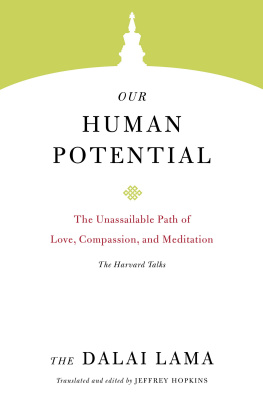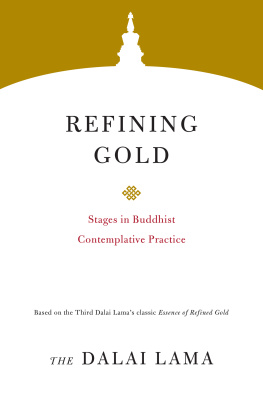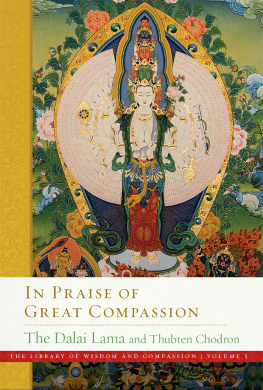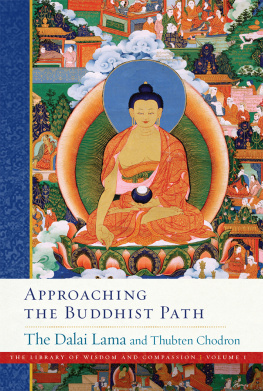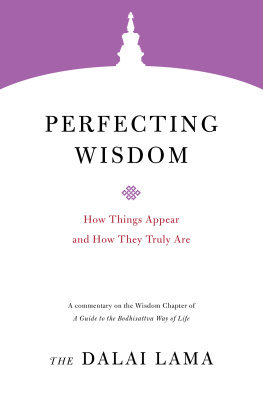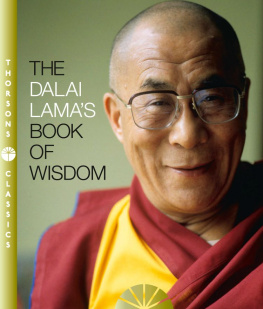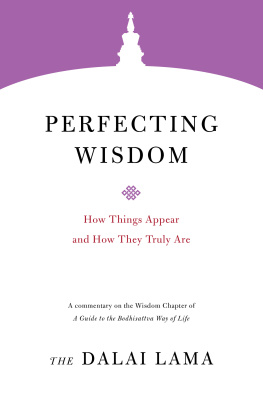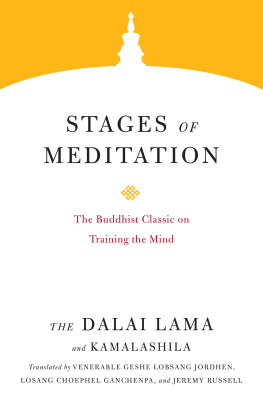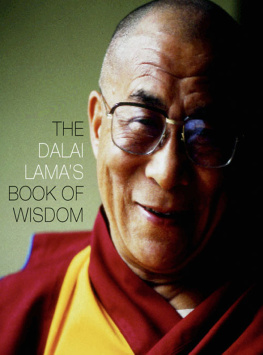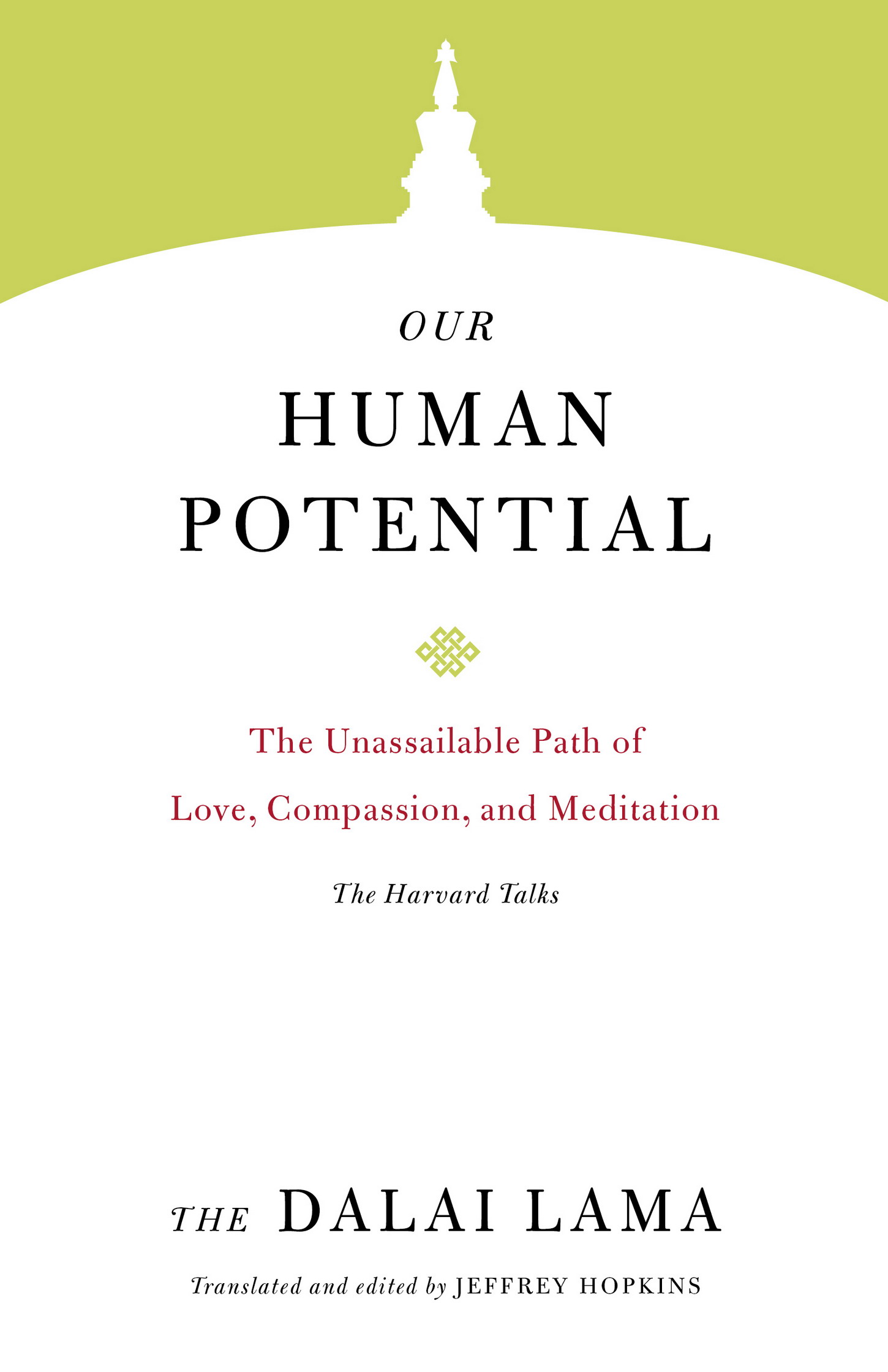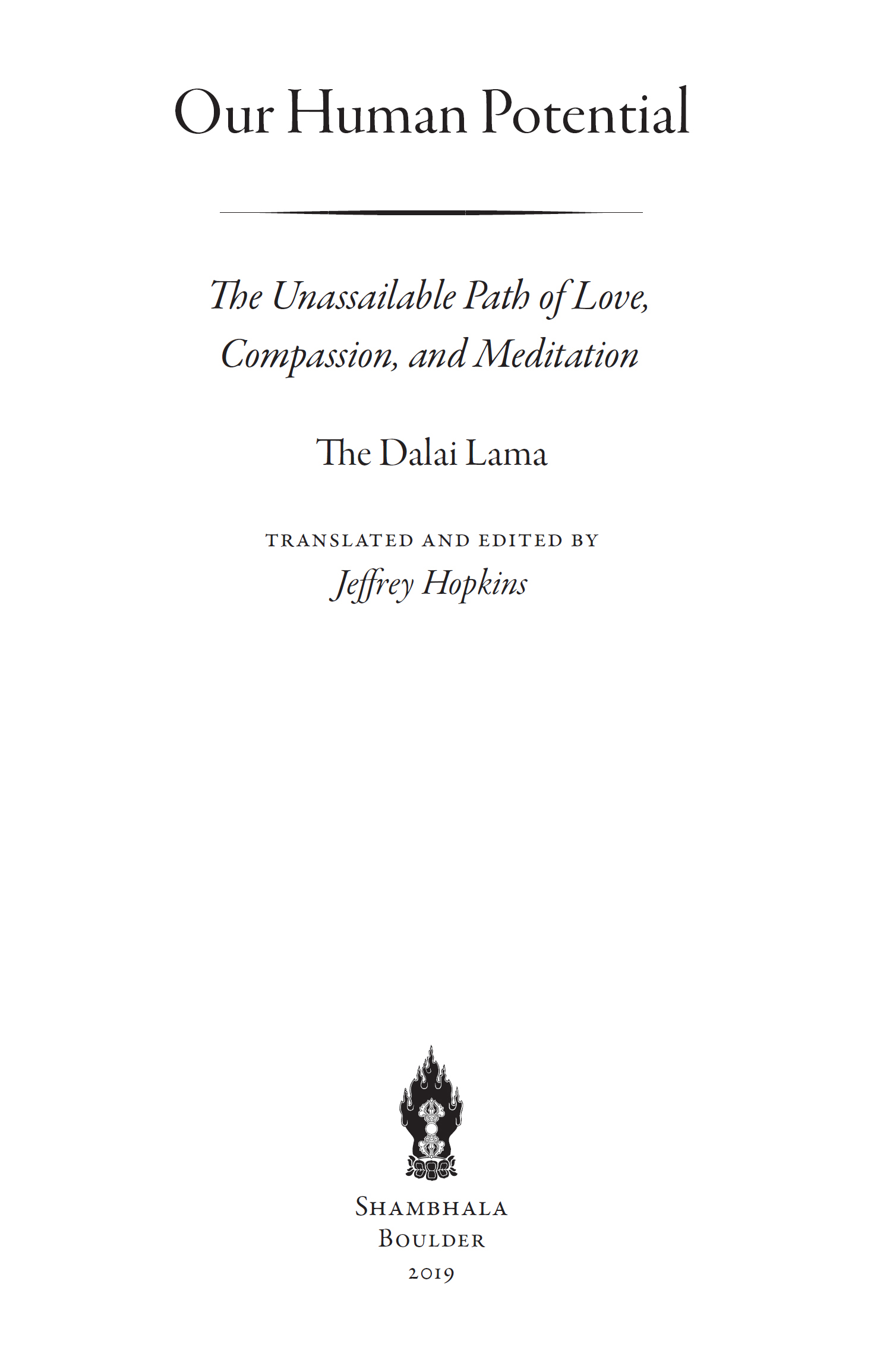Contents
Shambhala Publications, Inc.
4720 Walnut Street
Boulder, Colorado 80301
www.shambhala.com
1988 His Holiness the Dalai Lama and Jeffrey Hopkins
This book was previously published under the title The Dalai Lama at Harvard.
All rights reserved. No part of this book may be reproduced in any form or by any means, electronic or mechanical, including photocopying, recording, or by any information storage and retrieval system, without permission in writing from the publisher.
Cover design by Claudine Mansour Design
Library of Congress Cataloging-in-Publication Data
Names: Bstan-dzin-rgya-mtsho, Dalai Lama XIV , 1935 author. |
Hopkins, Jeffrey, translator, editor.
Title: Our human potential: the unassailable path of love, compassion, and meditation/The Dalai Lama; translated and edited by Jeffrey Hopkins. Other titles: Dalai Lama at Harvard.
Description: Boulder: Shambhala, 2019. | Series: Core teachings of the Dalai Lama | This book was previously published under the title The Dalai Lama at HarvardTitle verso. | Includes bibliographical references and index.
Identifiers: LCCN 2018041969 | ISBN 9781611806786 (pbk.: alk. paper)
eISBN9780834842182
Subjects: LCSH : BuddhismDoctrines.
Classification: LCC BQ 7935. B 774 D 34 2019 | DDC 294.3/4dc23
LC record available at https://lccn.loc.gov/2018041969
v5.4
a
T RANSLATORS P REFACE
I N A UGUST OF 1981, His Holiness the Dalai Lama of Tibet gave a series of lectures at Harvard University under the auspices of the American Institute for Buddhist Studies and the Center for the Study of World Religions. Organized principally by Professor Robert Thurman, president of AIBS, the Dalai Lamas lectures, which were given in Emerson Hall in Harvard Yard, fulfilled superbly the intention of providing an in-depth introduction to Buddhist theory and practice.
The lectures occurred over five days with sessions of approximately two hours each in the mornings and afternoons. Using the format of the four noble truths, the Dalai Lama depicted the situation of beings trapped in a round of suffering that is impelled by counterproductive actions that are themselves founded on a basic misunderstanding of the nature of persons and other phenomena. Ignorance being the root cause of suffering, he described, in considerable detail, the path out of this situationthe motivation to extricate oneself from uncontrolled repetition of unhealthy attitudes, the extension of this realization of ones own plight to that of others, and the consequent generation of universal compassion. He particularly emphasized the development of wisdom penetrating the veil of false appearance of phenomena, arriving at their true nature, unadulterated with false superimpositions.
After the first lecture on Monday morning, the Dalai Lama answered questions at the beginning of each session. Since the topics were concerned with the relationship between science and religion, the nature and levels of consciousness, the meaning of being a person in a system of selflessness, dualism, and non-dualism, the difference between low self-worth and selflessness, techniques for curing depression, the types of rainbow bodies, the difference between afflictive and non-afflictive attachment, the position of women in Buddhism, the conflict between evolution and the Buddhist theory of devolution, the usage of sex in the tantric path, how to conduct daily practice without becoming attached to it, and balancing altruistic activity and internal development, the answers covered the spectrum of issues that everyone with even a passing interest in Buddhism has wanted to probe for the last several decades. The Dalai Lamas answers revealed his deeply thoughtful and yet practical orientation to these crucial issues, balanced with self-effacing humor.
The lectures, translated and edited here in book form, provide technical information on a Buddhist perspective on the human situation as well as inspirational advice on love and compassion. The combination of intellect and impressive expository ability, coupled with practical, compassionate implementation that characterizes the Dalai Lamas personality, resounds throughout the talks. He speaks from the heart with insight drawn from a Buddhist tradition that reached high levels of development in the Tibetan cultural region, which stretches from Kalmuck Mongolian areas near the Volga River (in Europe), where it empties into the Caspian Sea, Outer and Inner Mongolia, the Buriat Republic of Siberia, Ladakh, Bhutan, Sikkim, much of Nepal, and all of present-day Ching-hai Province as well as parts of Gansu, Yunnan, and Sichuan Provinces (which were part of Tibet before the Chinese conquest in the 1950s). In this vast region of Inner Asia, the language of prayer and philosophical discourse was Tibetan, and the large monastic universities of Tibet, until the Communist takeovers, drew students from all of these areas. The Dalai Lama speaks out of this centuries-old tradition of Buddhist studies with a voice of experienceof the implementation of Buddhist principles and techniques in a very difficult period of loss of homeland. With particular poignancy, he speaks of the value of enemies and the pressing need for compassion, patience, and tolerance. As the lectures unfold, a picture of the Dalai Lama as striving to bring peace on the individual, family, local, national, and international levels emergesa leader of humankind suggesting techniques and advising on attitudes for actively converting conflict to peace.
I served as the interpreter for these lectures and have retranslated them for this book in order to attempt to capture the detail and nuance often missed in the pressure of immediate translation. I wish to thank Kensur Yeshi Thupten, former abbot of a Tibetan monastic college now re-established in south India, for identifying numerous quotations and Dr. Elizabeth S. Napper, Executive Director of the Tibetan Studies Institute, for making copious editorial suggestions. Thanks also to Gareth Sparham for reading the entire manuscript and making many helpful suggestions.
Occasional footnotes have been provided in order to explain translation choices and to give references to supplementary material as well as references for quotations. The names of Tibetan authors and orders are given in essay phonetics for the sake of easy pronunciation; for a discussion of the system used, see the technical note at the beginning of Meditation on Emptiness. Transliteration of Tibetan in parentheses and in the glossary is done accordance with a system devised by Turrell Wylie; see A Standard System of Tibetan Transcription, Harvard Journal of Asiatic Studies 22 (1959): 26167. For the names of Indian scholars and systems used in the body of the text, ch, sh, and h are used instead of the more usual c, , and s for the sake of easy pronunciation by non-specialists.
Jeffrey Hopkins
University of Virginia

